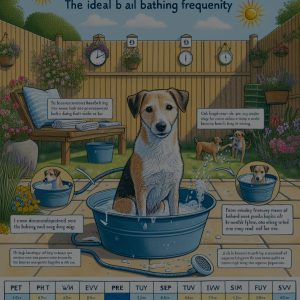
Regular exercise is crucial for maintaining the overall health and well-being of your furry companion. Just like humans, dogs require physical activity to stay fit, mentally stimulated, and happy. However, determining the right amount and type of exercise for your dog can be a bit tricky. In this article, we will discuss how to understand your dog’s exercise needs, assess their activity level, and create a tailored workout plan to ensure they get the necessary workout.
Understanding Your Dog’s Exercise Requirements
Understanding your dog’s breed, age, size, and overall health is essential in determining their exercise requirements. Some breeds are naturally more active and require more vigorous exercise, while others may be content with shorter, low-impact activities. Younger dogs typically have more energy and may need more exercise to burn it off, while older dogs may require gentler movements to prevent strain or injury. Consulting with your veterinarian can also provide valuable insights into your dog’s specific exercise needs.
Assessing Your Dog’s Activity Level
Observing your dog’s behavior and activity level can help you assess how much exercise they require. Does your dog get restless and destructive when they haven’t had enough physical activity? Do they seem lethargic and disinterested in playtime? Monitoring your dog’s response to exercise can give you clues about whether they need more or less activity. Keep in mind that mental stimulation, such as training sessions or puzzle toys, can also be a valuable form of exercise for your dog.
Creating a Tailored Workout Plan
Once you have a better understanding of your dog’s exercise requirements and activity level, you can create a tailored workout plan that meets their needs. This plan should include a mix of aerobic exercises, such as running or fetch, and strength-building activities, like agility or swimming. Be sure to consider the weather and your dog’s comfort levels when planning outdoor activities. Regular walks, play sessions, and interactive toys can also help keep your dog engaged and physically fit. Remember to gradually increase the intensity and duration of their workouts to prevent injury.
By taking the time to understand your dog’s exercise requirements, assess their activity level, and create a tailored workout plan, you can ensure that they receive the necessary physical and mental stimulation to lead a healthy and happy life. Regular exercise not only benefits your dog’s physical health but also strengthens your bond and provides opportunities for socialization and fun. So, lace up those walking shoes, grab a leash, and get ready to hit the pavement with your furry best friend!










